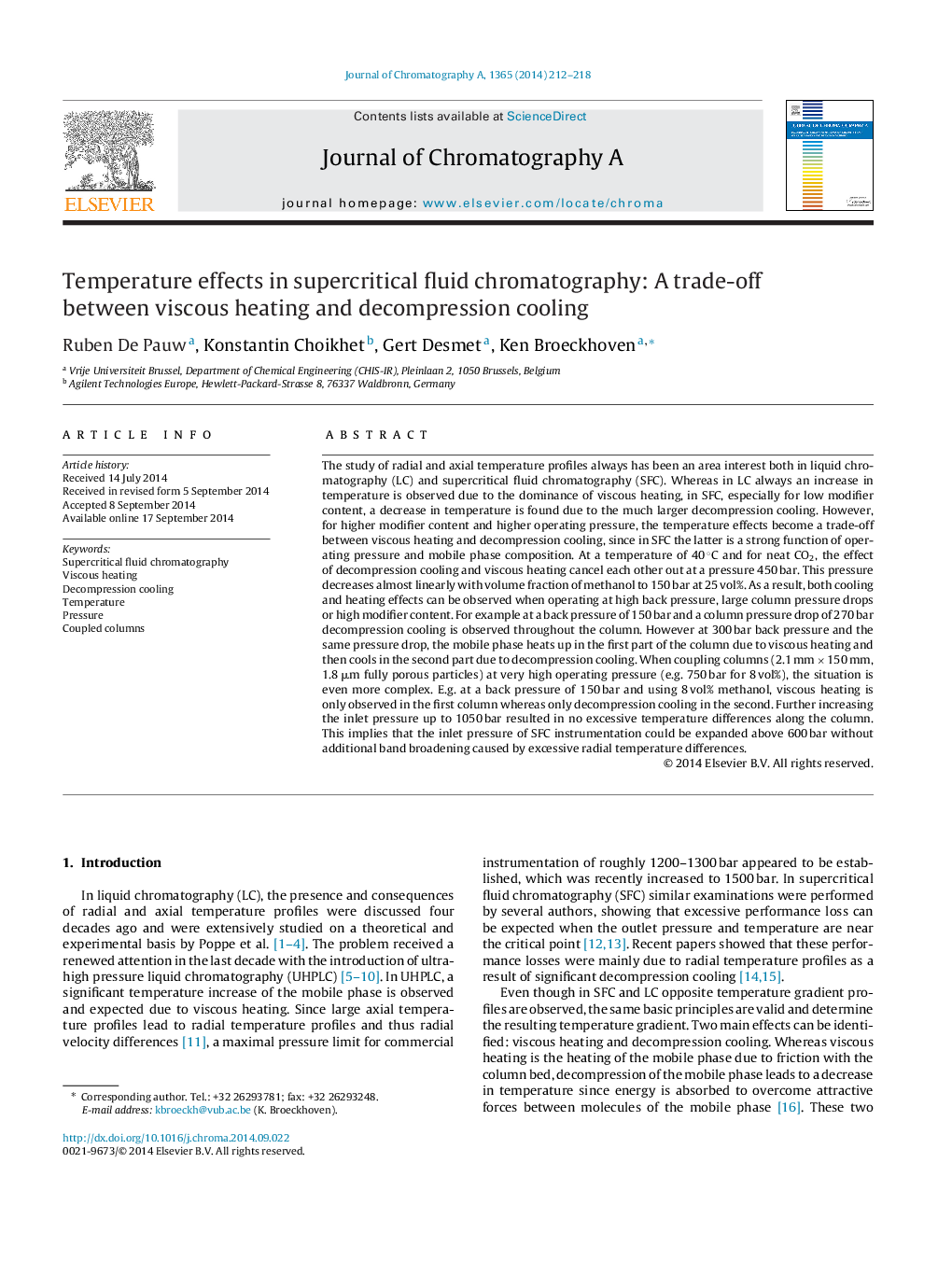| کد مقاله | کد نشریه | سال انتشار | مقاله انگلیسی | نسخه تمام متن |
|---|---|---|---|---|
| 1199769 | 1493561 | 2014 | 7 صفحه PDF | دانلود رایگان |
• Both viscous heating and decompression cooling take place in SFC.
• A temperature increase or decrease depends on the conditions of the mobile phase.
• Viscous heating is more dominant at higher back pressures or modifier content.
• Extended inlet pressure (1050 bar) result in no excessive temperature differences.
• Both temperature increase and decrease are observed at the same time in the column.
The study of radial and axial temperature profiles always has been an area interest both in liquid chromatography (LC) and supercritical fluid chromatography (SFC). Whereas in LC always an increase in temperature is observed due to the dominance of viscous heating, in SFC, especially for low modifier content, a decrease in temperature is found due to the much larger decompression cooling. However, for higher modifier content and higher operating pressure, the temperature effects become a trade-off between viscous heating and decompression cooling, since in SFC the latter is a strong function of operating pressure and mobile phase composition. At a temperature of 40 °C and for neat CO2, the effect of decompression cooling and viscous heating cancel each other out at a pressure 450 bar. This pressure decreases almost linearly with volume fraction of methanol to 150 bar at 25 vol%. As a result, both cooling and heating effects can be observed when operating at high back pressure, large column pressure drops or high modifier content. For example at a back pressure of 150 bar and a column pressure drop of 270 bar decompression cooling is observed throughout the column. However at 300 bar back pressure and the same pressure drop, the mobile phase heats up in the first part of the column due to viscous heating and then cools in the second part due to decompression cooling. When coupling columns (2.1 mm × 150 mm, 1.8 μm fully porous particles) at very high operating pressure (e.g. 750 bar for 8 vol%), the situation is even more complex. E.g. at a back pressure of 150 bar and using 8 vol% methanol, viscous heating is only observed in the first column whereas only decompression cooling in the second. Further increasing the inlet pressure up to 1050 bar resulted in no excessive temperature differences along the column. This implies that the inlet pressure of SFC instrumentation could be expanded above 600 bar without additional band broadening caused by excessive radial temperature differences.
Journal: Journal of Chromatography A - Volume 1365, 24 October 2014, Pages 212–218
